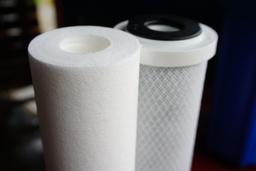Highly Charged, Low Water Uptake Ion-Exchange Materials
TECHNOLOGY NUMBER: 2021-101
Tags:

OVERVIEW
Improvements in functionality of ion-exchange membranes (IEMs)- Scalable synthesis of ion exchange membranes for water treatment and energy applications
- Improved permselectivity without decrease in high ion conductivity
BACKGROUND
Ion-exchange membranes (IEMs) used in water treatment and energy applications selectively transport ions of a given charge (positive or negative) and prevent the crossover of oppositely charged ions and other undesirable species. Current commercial IEMs are inadequate for non-traditional, highly impaired water sources (e.g., brines, produced flowback water) and are also a limiting factor in energy applications. Improved rates of ion transport and greater permselectivity are required for these demanding applications.
INNOVATION
Researchers at the University of Michigan have developed a new synthetic approach to producing more highly charged IEMs with lower water uptake values. The approach utilizes inexpensive, commercially available charged monomers and cross-linkers, and the reaction is carried out in water under relatively mild conditions. The membrane fabrication process can be scaled up with existing membrane roll-to-roll manufacturing infrastructure. The result is a cross-linked polymeric IEM with an exceptional combination of high ionic conductivity and excellent permselectivity. The membranes should be useful for various water treatment and energy technologies, particularly electrodialysis and reverse electrodialysis with highly concentrated salt solutions (i.e., brines).